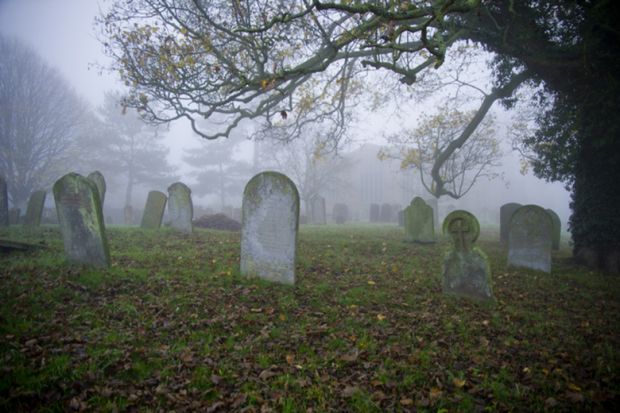Death’s carbon footprint runs across this book’s threefold division of nature, mourning and memorials, as well as its encompassing themes of faith and secularisation, ideas of dying, practices of popular mourning and digital media in the US. This ecological focus on corpse disposal is also increasingly important in the UK funerary world, following the lead of environmentalism at large. It is likely to capture wide public attention in 2020, when the innovation of alkaline hydrolysis, or body dissolving, makes the headlines.
David Charles Sloane, born into a line of cemetery managers reaching back to 1876, teaches history in southern California. In December 2007, he found his wife dead from a stroke. This, despite so much funeral-linked experience, made death’s “cruel realities…shatteringly clear” to him. These interlaced elements bring emotion, insight and information to the core question of how environmental issues balance against the cultural heritage of cemetery memorials, especially when negotiating experiences of bereavement.
Ecological questions underlie Sloane’s approach to the economics of funerals, especially given US landscaped cemeteries and concrete- and steel-lined burial vaults, so unlike the UK practice of earth-walled graves. Similarly, heavily constructed caskets for bodies, extensive embalming of the dead and chemicals used for lawn maintenance all carry environmental costs. The author cites annual estimates of US cemeteries using some 30 million feet of hardboard, more than 100,000 tonnes of steel and over one and a half million tonnes of concrete. To this can be added 800,000 gallons of embalming fluid, including much formaldehyde.
But not all the 2.2 million US annual dead are buried. Cremation is on the rise after a slow start, as we can see from these approximate percentages of deaths over time for the US and the UK: 1960: 4 per cent and 35 per cent; 1970: 5 and 56 per cent; 1980: 10 and 65 per cent; 1990: 17 and 70 per cent; 2000: 25 and 72 per cent. Sloane says that in 2015, cremation accounted for roughly 49 per cent of US deaths, by when the UK had reached 76 per cent. He rightly argues that 19th-century innovators saw cremation as a sanitary form of disposal, but what was then “green” now throws much darker shadows. Each US cremation apparently generates 540lb (245kg) of carbon dioxide.
While Sloane says that few ponder such environmental costs, he writes favourably about Ken West, the Englishman who inaugurated “woodland burial” while overseeing Carlisle’s cemetery and who decries cremation for its use of fossil fuels, waste of the body’s biodegradable resources and the materials deployed in crematoria. Problems over mercury (cremercury) and other noxious cremation gases are also germane.
While Sloane’s one driving theoretical notion – cultural hybridity – envisages all funeral options coexisting in time and space, he hopes that energy-efficient practices will prevail, especially as millennial generations hold their memorials online and avoid cemetery ceremony. Historians may question the author’s overlapping eras of sentimentality: from 1831 to the 1890s; of mourning and commemoration from the 1870s to the 1970s (with its professionalisation and medicalisation of death services); and then the “revival of death” between the 1960s and the 1980s, when some families engaged in personalising funerals and creating street memorials, while hospices developed their niche approach to dying. Although Sloane mentions racism, gender is left untouched. His endnotes are good, but the absence of a formal bibliography is unfortunate. Still, the book’s photographs, tables and ecological thrust enliven contemporary American ways of death.
Douglas J. Davies, professor in the study of religion and director of the Centre for Death and Life Studies at Durham University, is the author of Mors Britannica: Lifestyle and Death-Style in Britain Today (2015) and Death, Ritual and Belief (third edition, 2017).
Is the Cemetery Dead?
By David Charles Sloane
University of Chicago Press
288pp, £20.50
ISBN 9780226539447
Published 12 June 2018
后记
Print headline: Ends within the Earth’s means



